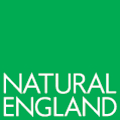Submitted by PBMS Admin on
Mercury (Hg) contamination in wildlife in Britain has been and remains a focus of interest for the PBMS - for instance see Walker et al., 2016.
Recently, we teamed up with Spanish collaborators to assess the scale of mercury contamination around the Iberian Peninsula but used the yellow-legged gull (Larus michahellis) rather than a raptor as a sentinel species. Higher Hg concentrations in gull eggs were associated with northern Mediterranean colonies, likely due to proximity to emission sources, circulatory marine currents and diet composition.
We also detected high mercury levels in the eggs of Audouin’s gulls (Larus audouinii), one of the most endangered gull species in the world. The levels detected raise concerns about the effects mercury may have on this protected seabird species.
The full results of the study are published in an open access paper: Pereira et al., 2019. Temporal and spatial distribution of mercury in gulls eggs from the Iberian Peninsula. Archives of Environmental Contamination and Toxicology 76 394-404. https://doi.org/10.1007/s00244-018-0584-0
A free download is obtainable here.







